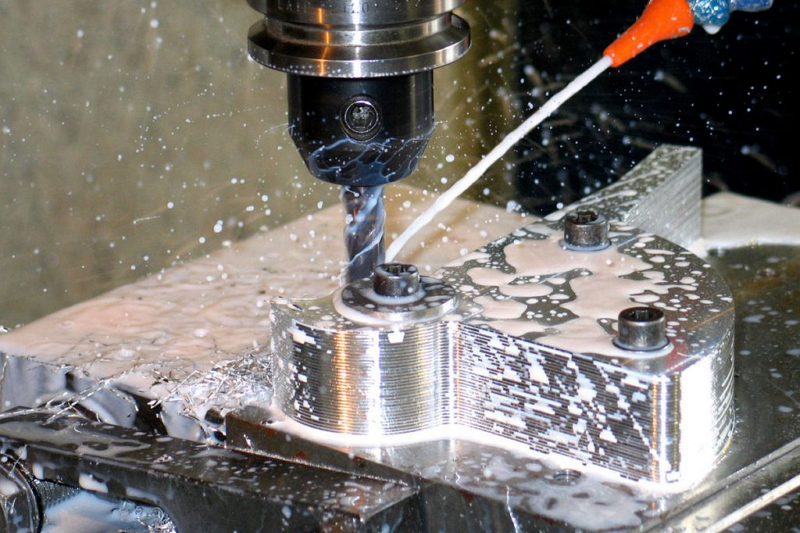CNC machine tools (Computer Numerical Control Machine Tool) are one of the core equipment of modern manufacturing industry, and are widely used in aerospace, automobile manufacturing, precision molds, medical equipment and other fields. It accurately controls the movement of tools through program instructions to achieve efficient and high-precision processing of complex parts. So, how do CNC machine tools work? What key technologies support their efficient operation? This article will give you an in-depth analysis of the working principle and core technology of CNC machine tools.
1. The basic working principle of CNC machine tools
The working principle of CNC machine tools is to convert the designed CNC program (G code) into control instructions through a computer control system, drive the various components of the machine tool to work together, and complete material cutting, drilling, milling, turning and other processing tasks.
Its basic process includes the following steps:
Programming input: The operator uses CAD/CAM software to compile the geometric information and processing path of the part into a CNC program and upload it to the machine tool system.
CNC system parsing program: CNC controller parses G code into recognizable instructions, controls the movement of each axis and spindle speed, tool path, etc.
Servo system drive execution: CNC system controls the motor through servo drive, drives the workbench and tool to move accurately according to the instructions.
Processing execution: The tool cuts materials on the controlled path to achieve the expected shape and size of the parts processing.
Through this automatic closed-loop control system, CNC machine tools can achieve high-precision, repeatable and complex shape processing capabilities.
2. Core technology analysis of CNC machine tools
The reason why CNC machine tools can occupy a core position in modern manufacturing is inseparable from the support of the following key technologies:
1. CNC system (Control System)
The CNC system is the brain of CNC machine tools, responsible for instruction parsing and execution scheduling. The current mainstream systems include Siemens, FANUC, Mitsubishi, Heidenhain, etc., with intelligent functions such as multi-axis linkage, real-time compensation, and automatic fault diagnosis.
2. Servo drive and servo motor
The servo system controls the motion accuracy of each axis of the machine tool. Through a closed-loop control system (usually feedback position by an encoder), high-response, high-precision feed control is achieved, which is the basis for high-precision processing.
3. Mechanical structure and moving parts
The mechanical structure of the CNC machine tool, such as the bed, guide rails, and lead screws, determines the overall rigidity and stability. High-precision ball screws, linear guides, spindle units, etc. are important links in precision control to ensure smooth movement and accurate positioning during processing.
4. Automatic tool changer system (ATC)
The automatic tool changer can automatically change different processing tools according to the program, significantly improving processing efficiency. It is especially common in machining center machine tools.
5. Cooling and lubrication system
In order to prevent tool overheating, workpiece deformation, and machine tool wear, CNC machine tools are usually equipped with automatic cooling and lubrication systems to extend tool life and ensure processing stability.
6. Programming technology (CAD/CAM)
Through computer-aided design (CAD) and manufacturing (CAM) software, product design drawings can be converted into executable G-code programs to achieve fast programming, automatic optimization of paths, and improve production efficiency.
![CNC Machine Tools manufacturer4 CNC Machine Tools manufacturer4]()
3. Intelligent development trend of CNC machine tools
In recent years, CNC machine tools are evolving towards "intelligent, automated, and networked":
Multi-axis linkage: Five-axis and six-axis machine tools are becoming increasingly popular, and can process more complex surface structures;
Remote monitoring: Through the Industrial Internet of Things (IIoT), remote monitoring of equipment status, data collection and analysis are achieved;
AI-assisted processing: Intelligent compensation, tool wear prediction, and adaptive processing strategies are being introduced to improve the level of automation and yield rate;
Human-computer interaction optimization: Touch-type operation interface, multi-language system, and simpler graphic programming greatly reduce the operating threshold.
Conclusion
As the core of high-end equipment manufacturing, CNC machine tools integrate multidisciplinary technologies such as mechanical engineering, electronic information, computer control, and intelligent manufacturing, and continue to promote industrial production to higher precision and higher efficiency. Understanding its working principle and core technology not only helps to better apply machine tools, but also provides an important reference for enterprises in technology upgrades and equipment selection.
In the future, with the continuous integration of technologies such as artificial intelligence, big data, and 5G, CNC machine tools will play a more important role in digital factories and intelligent manufacturing systems, helping the manufacturing industry move towards a smarter and more efficient new era.
![Moving Crossbeam 5-axis Simultaneous (Dual Head) CNC Gantry Machining Center.jpg]()
![Moving Crossbeam CNC Gantry Machining Center.jpg]()
![High-Speed Gantry Milling Center for Extra Long Jobs in Aerospace.jpg]()
![Moving Crossbeam CNC Gantry Milling Machining Center.jpg]()
![Heavy Cutting Movable Column CNC Machining Center Series.jpg]()
![未命名圖片 (5).jpg]()
![CNC Moving Column Milling Center.jpg]()
![High-Speed Series for Mould Machining.jpg]()
![CNC Vertical Milling Machining Center.jpg]()
![CNC Horizontal Milling Machining Center.jpg]()

































